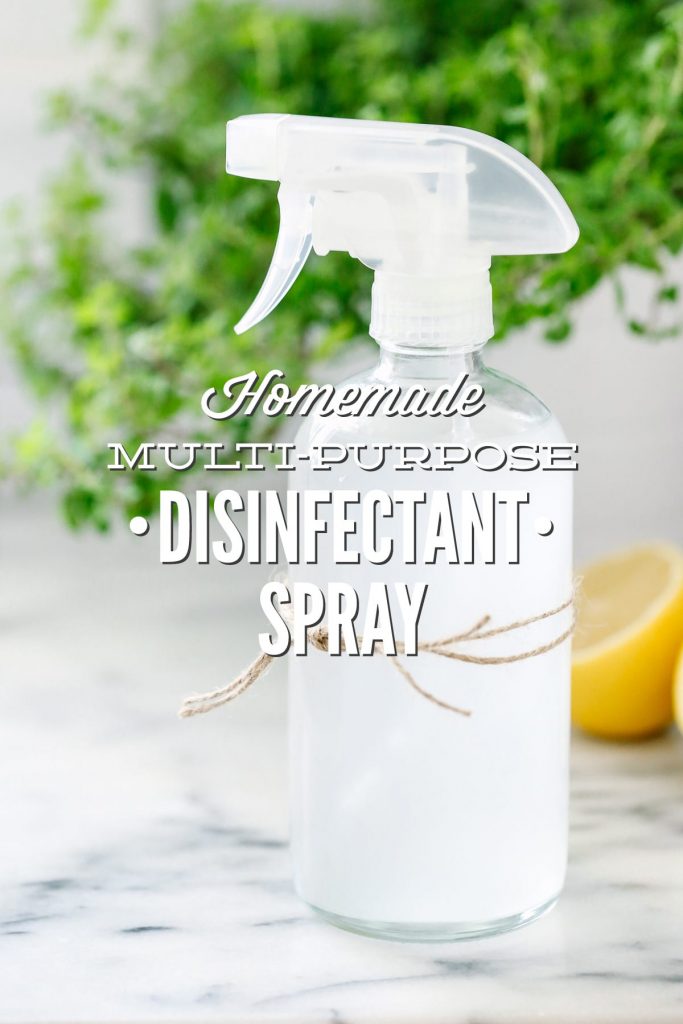
Want to Save This Article?
Enter your email & I’ll send it straight to your inbox. And you’ll get new recipes & tips each week.
Two weeks ago, Mrs. Sniffles knocked on our “door.” I tried to convince her to leave with my homemade remedies, but she insisted on staying, so for the last two weeks we’ve been battling an unwelcome guest and nasty sinus infections.
Mrs. Sniffles was sure to pack every “present” for her extended stay, too: runny nose, sore throat, tiredness, etc. Thankfully, after lots of rest, vitamin C, sore throat tea, elderberry syrup shots, and elderberry soda, Mrs. Sniffles finally decided to pack-up her remaining luggage and move on. Hallelujah! It’s wonderful to have energy and a clear head again.
As it turns out, our family isn’t the only family who’s been affected by Mrs. Sniffles. She’s quite the experienced traveler! The entire school district in Pinellas County (where we live) has been hit hard by her visits. Some schools have seen dramatic decreases in weekly attendance since January.
Right now is the perfect time to start talking about (and using) a light disinfectant spray. Or shall I say a replacement for the stuff found on store shelves? I’m sure most of us have vivid memories of heavily-perfumed sprays due to their popular use in restaurant bathrooms, homes, and even classrooms.
Just the other day I noticed a store-bought spray and its infamous, headache-inducing scent in the women’s bathroom at Dustin’s work. Honestly, I don’t blame his work (or others) for using a store-bought spray, because marketing would lead me to believe that a store-bought solution, full of mystery ingredients, is the only way to properly clean and disinfect a room. Personally, I never once thought about what was in those sprays before our real food conversion, or even thought that a simple alternative may be sitting in my pantry or medicine cabinet.
Alcohol may be used for much more than a strong cocktail. It’s also a very handy DIY ingredient, as well as vinegar and particular essential oils.
Disinfecting is an activity that’s (generally) done after cleaning and, in my cleaning opinion, needs to be done much less often in the average home. “Disinfecting…refers to killing a high percentage of the germs on a surface or rendering them incapable of reproducing.” (source)
Disinfecting takes care of more than just dirt, grease, or dust. I don’t believe disinfecting every surface on a regular basis is essential in a modern-day home, thanks to indoor plumbing and healthy hygiene practices. Now when Mrs. Sniffles comes knocking, or I cut raw meat on my favorite cutting board, I’m all about using a homemade disinfectant spray. PS: I share my preferred approach for disinfecting a cutting board at the bottom of my recipe.
And that, my friend, is exactly why I mixed up a bottle of my simple 3-ingredient homemade spray this past week. Take that Mrs. Sniffles!
More Natural Ways to Protect Against Unwanted Germs
- Homemade Hand Sanitizer Spray: A simple spray for when you need to wash your hands and don’t have soap and water.
- Homemade Hand Sanitizer Gel: Want a gel instead of a spray? This recipe is for you.
- Natural Ways to Boost the Immune System: My tried-and-true ways to naturally maintain a healthy and happy immune system.
- Homemade Elderberry Syrup: A homemade remedy that’s delicious and beneficial.
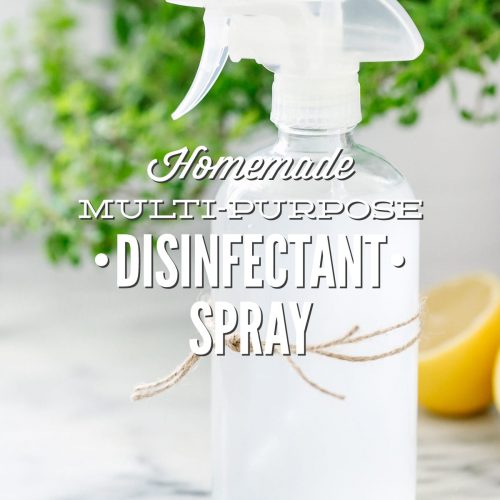
Homemade Multi-Purpose Disinfectant Spray
Ingredients
- 1 1/2 cups 100 proof alcohol (vodka) or higher get the highest proof alcohol you can find (in some states you can buy 190 proof, which is Everclear, if not at least 100 proof) or at least 70% isopropyl rubbing alcohol. Rubbing alcohol can damage painted and varnished surfaces so it's best to spot test first.*
- 1/2 cup white distilled vinegar or more alcohol
- 50-60 drops tea tree essential oil or lavender essential oil (optional)
Instructions
- Pour the vodka into a 16 ounce spray bottle and then the essential oil(s). Shake the bottle to combine the vodka and oils. Finally, add the vinegar and shake the bottle again. This recipe is not safe to use on special stone surfaces, like granite or marble, due to the vinegar. Please see the notes section below for more information.
- I've also used a Bandit Oil (Thieve's Oil or Germ Destroyer) blend in my spray instead of the tea tree essential oil. Learn more about the science behind using essential oils for disinfecting.
Notes
Disclaimer: The DIY recipes on this website are based on my personal experiences. I am not a trained chemist, cleaning specialist, or skincare expert. The DIY recipes shared on this website haven’t been tested in a lab. Information about my products or recipes haven’t been evaluated by the Food and Drug Administration. This information is not intended to diagnose, treat, cure, or prevent any disease. Please consult a doctor or specialist for specific concerns about any skincare issues, cleaning products, or dietary needs. Please use your discretion, based on your own research, when making homemade products.

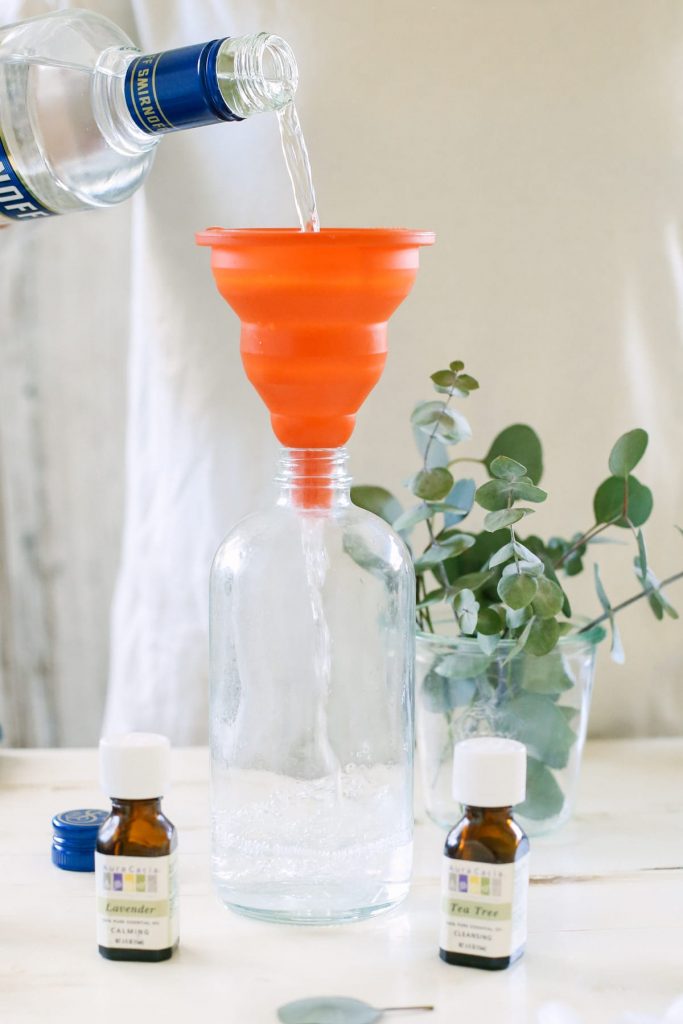
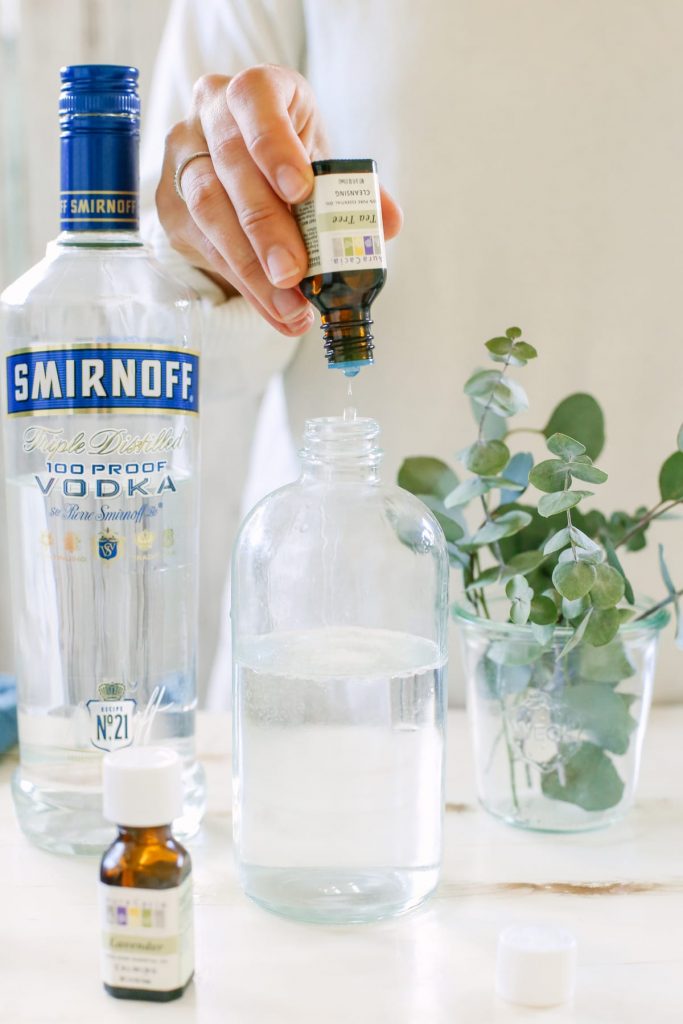
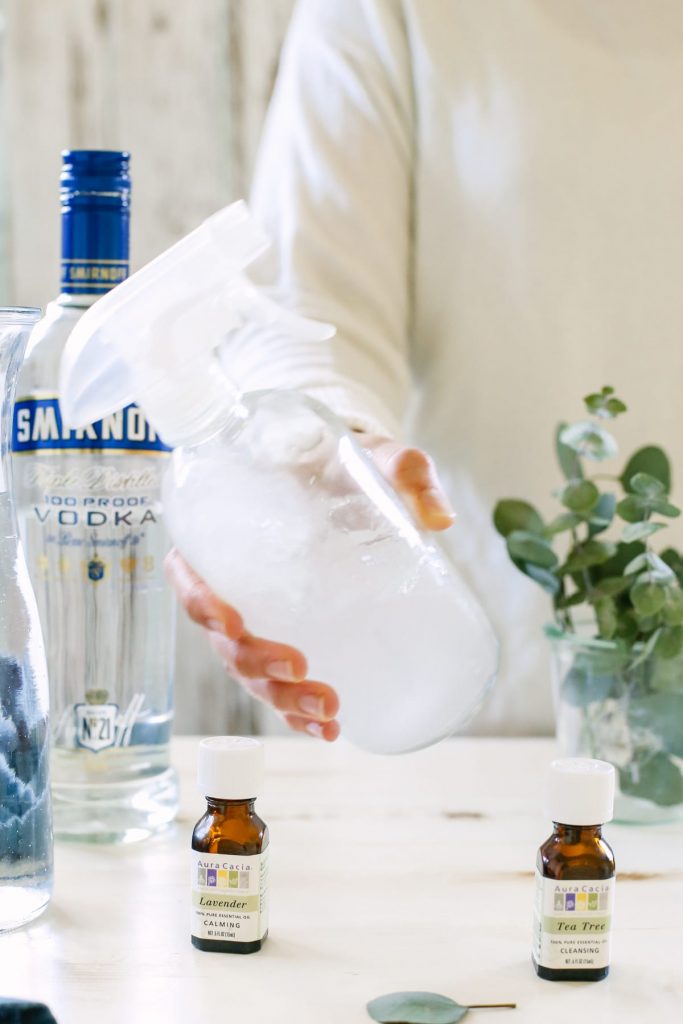
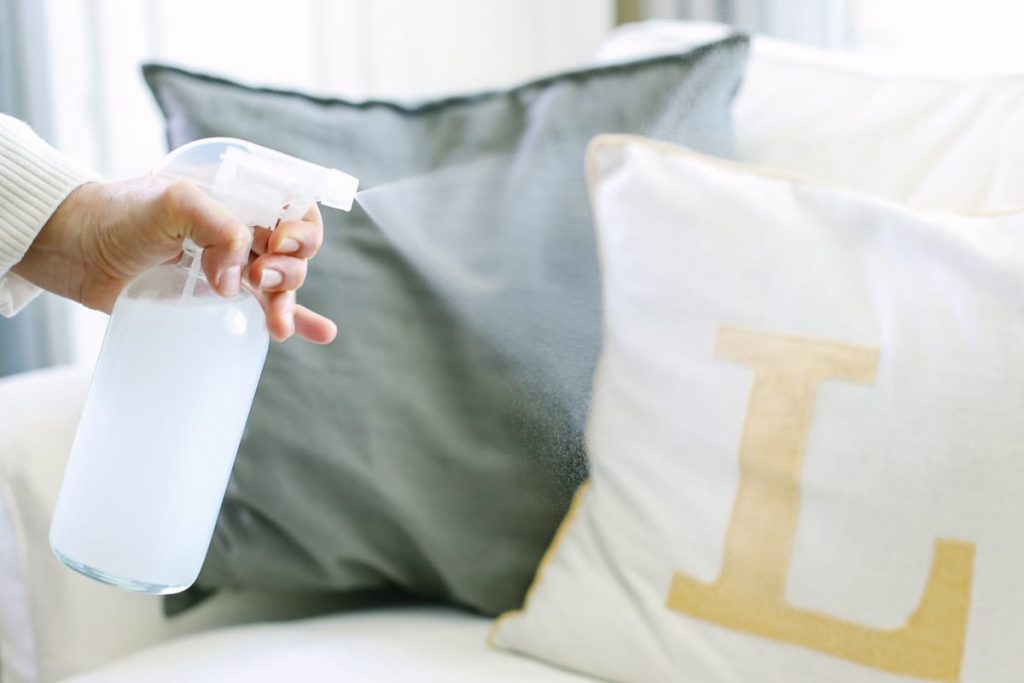
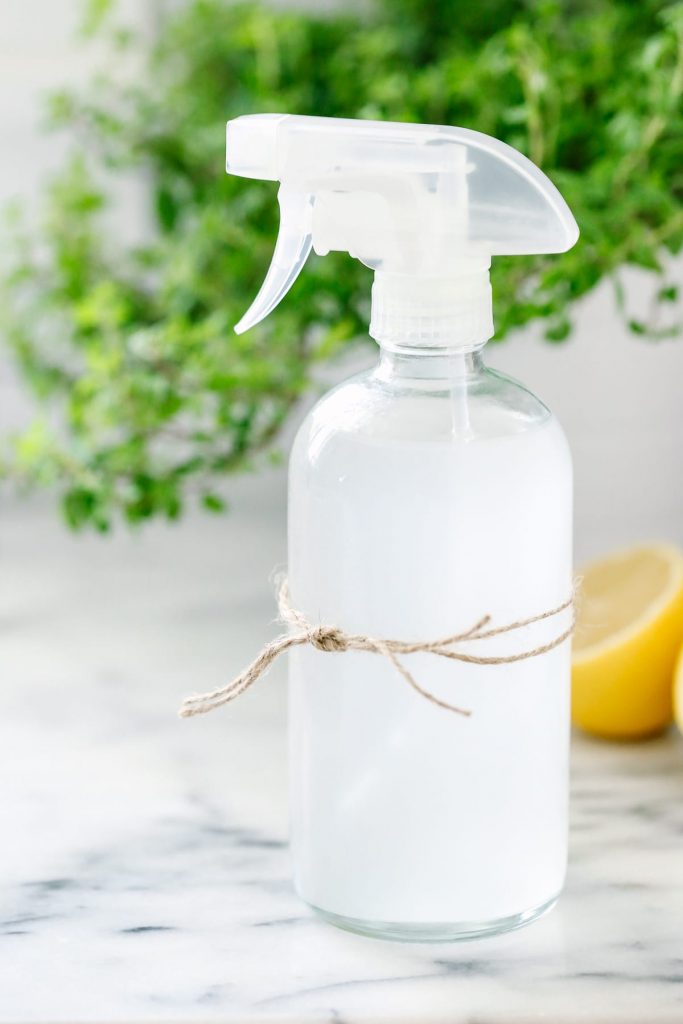
I had no idea that vodca can be use as disinfectant, well at least, I know now. Anyways. Before lockdowns were imposed, I used to be feared about the shortages of alcoholic and disinfectant product. All of te sudden, I used vinegar as disinfectant spray on my household and every stuffs enters in our house. I just believe that vinegar has its natural disinfectant property that I can use to fight Covid. Now I will add your vodca recipe to my list of DIY disinfectant.
That’s great, Claire!
LS Team
Great recipe, thank you for sharing this but as per my experience, HOCL is all-natural, organic, non-toxic, non-irritant, non-corrosive, with minimal odor, and environmentally safe.
@john bailey What does that mean
Can this recipe be used to spray on children’s backpacks?
Hi Amber,
I don’t see why not. It cant cause any harm.
LS Team
Hey Kristin,
That’s a great DIY. Can this disinfectant solution be used for cleaning kids clothes and toys? Is it safe to use?
I’m looking for a way to disinfect the air in my home. Do you have a recipe for spraying the air rather than surfaces?
Unfortunately no.
I use this as an air deodorizer and disinfectant. You just need a spray nozzle with a fine mist.
Hi there –
Love all your recipes, especially the DIY hand soap.
I want to make this spray but my concern is the essential oil. I know it’s for smell, but, my husband isn’t thrilled with the small oily film the hand soap leaves and is skeptical about this spray. Will it leave an oily residue on the counter tops or stove? Thank you!
So happy to have found this as I’m almost out of our 7th Gen air spray from the store and of course there is none to be found anywhere now. This is the only decent DIY recipe I’ve found that uses alcohol instead of just witch hazel and distilled water. I’ve followed Kristen for years, don’t know why I didn’t check here first! Thanks team LS.
If anyone is looking for alcohol for recipes like this during the COVID 19 pandemic – https://www.corsairdistillery.com/hand-sanitizer/
It is 80% ethanol so clears the CDC’s recommendations.
So happy you love it, Claire!
LS Team
Good afternoon, I was searching for recipes to use high proof alcohol as a disinfectant spray.
I was shocked to see use using/recommending using only 100 proof Vodka. The recommended percentage, which is different from Proof, is 70% or higher. 100 proof Alcohol is only 50%. The proof rating is twice the % level. So at a minimum 140 Proof alcohol is needed.
Not everyone can find this high of an alcohol content to my knowledge, so that’s why I say 100 proof or higher. Glad you’re doing your research as that’s what everyone needs to do. The CDC has info that can help.
LS Team
Love it!!
YAY! So happy you love it, Princella.
LS Team.
Hi there I want to thank you for your your recipe, I have shared this on my FB. This will fight covid 19.
Thank you, this is a life saver
Hi Kristin,
Can i use pure white vinegar instead of distilled vinegar, I couldn’t find any distilled vinegar in our place.
Thank you
Hi Lyn,
Yes, that will work! Or you can use more alcohol.
LS Team.
Hi, I have a couple small bottles of tea tree oil, but I’ve also got a large bottle of peppermint oil, would that also work?
Hi Bill, Tea tree oil is a great disinfectant and peppermint oil will also work.
LS Team.
Hello
Please clarify, I see vinegar listed twice in your disinfectant recipe. Once as an alternate to rubbing alchole or vodka. The second time, viniger is listed as an ingredient. Do measure vinegar twice?
Hi Sara, no it is only added once.
LS Team.
Anyone else here after the outbreak of Corona?
Hi,
your recipe for disinfectant spray.
What size bottle of tea tree essential oil should I buy? How many ml is 50 t0 60 drops?
What is the purpose of using tea tree essential oil? Is it just for a cosmetic smell?
Thank you.
Hi David,
a 10ml bottle will have between 200-250 drops.
Tea tree oil is a natural antibacterial product.
Hope this helps!
LS Team.